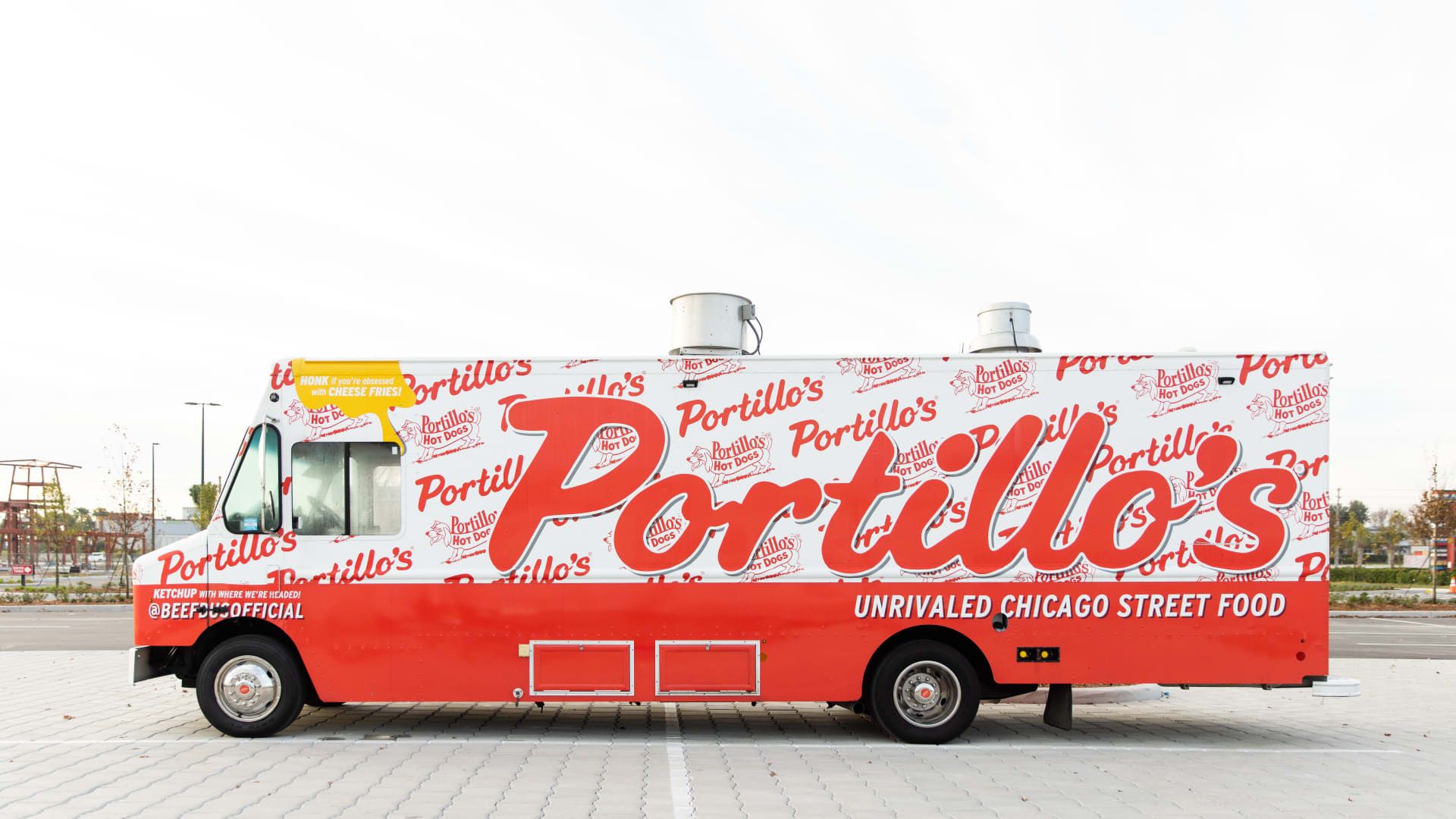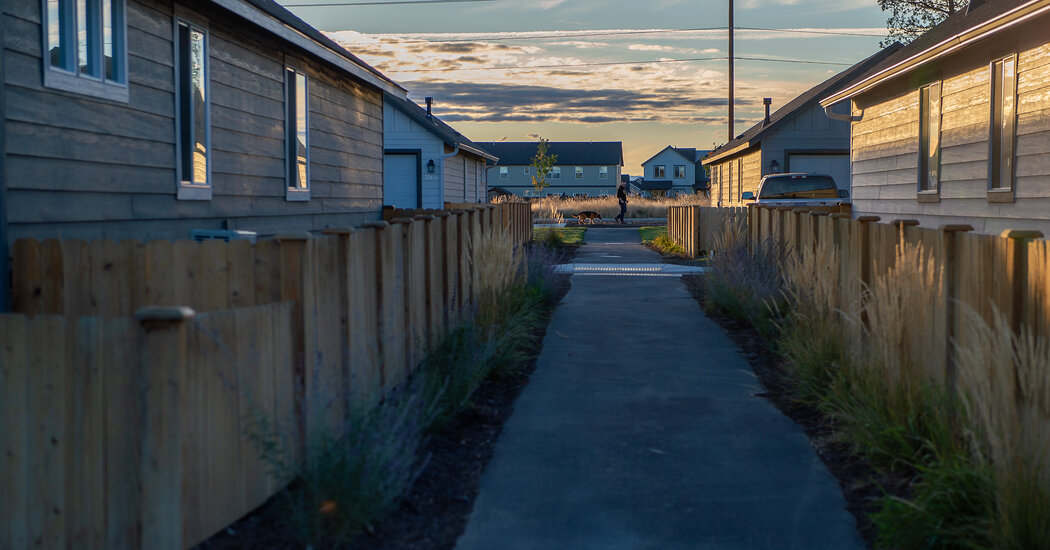A Portillo's meat bus in Kissimmee, Florida.
Source: Portillo's
When based in Chicago Portillo's enters a new market, sends out its “Beef Bus” early, offering its hot dogs and Italian beef sandwiches to new customers for weeks, introducing them to the brand and whetting their appetite before it finally opens a new restaurant.
Recently, the Beef Bus has made many trips to the Sun Belt.
“Texas alone has grown more people in the last decade than eight Midwestern states we have a presence in combined,” Portillo CEO Michael Osanloo told CNBC. “So it's a no-brainer to go where the growth is.”
The chain's sales are “much stronger” in Texas, Arizona and Florida than in Midwestern states like Indiana and Wisconsin, according to Osanloo. Portillo's opened its first location in Texas a little over a year ago. In its first 12 months, the location generated $13 million in sales, which the restaurant was equivalent to a $1 billion box office hit.
While the exact states included in the Sun Belt may vary, the name refers to the southern third of the US known for its sunny climate. In recent years, the region has seen booming population growth, setting it apart from the Northeast and Midwest. The trend accelerated during the Covid-19 pandemic as consumers sought more space, warmer weather, fewer government restrictions and cheaper housing in cities like Charlotte and Phoenix, which are among the most populous in the US along with with Texas cities such as Houston and Dallas. .
Because of that shift in population, restaurants are now looking to the region to boost sales. Smaller chains are expanding earlier into the Sun Belt, rather than into the Midwest or Northeast. For more mature companies like McDonald'smeans accelerating the growth of new restaurants in areas where they are now underrepresented.
“We always say retail follows the rooftops, so when you have a ton of people moving into an area, there's a lot of demand,” said Justin Greider, senior vice president of Florida retail for real estate firm JLL. “Combined with the overall increase in consumer spending in restaurants that we've seen, it's kind of a perfect storm to create a really conducive environment for a lot of restaurant groups that want to be here.”
It's not just restaurants that are looking to the Sun Belt to increase their sales. Based in Fort Worth american airlines is updating its routes to reflect the changing population, executives said Monday at an investor event. Macy's has been opening smaller stores in suburban shopping centers, starting in the Dallas and Atlanta areas. Real estate investment trusts like Phillips Edison & Company, which previously invested in the region, have seen southward migration boost their business centers.
Golden arches meet golden rays.
As the third-largest restaurant chain in the United States by number of stores, McDonald's can't be accused of ignoring the Sun Belt, but it has been slower to pick up the trend and saturate those growing markets.
“In our U.S. markets, the number of our stores has grown much more slowly than the population in the fastest-growing areas,” Manu Steijaert, McDonald's global chief customer officer, said during the company's investor day in December. “We have an important opportunity to adjust that ratio.”
McDonald's aims to open 900 new restaurants by 2027 in the U.S. Most of those locations will be concentrated in Florida, Texas, Arizona, Georgia and North Carolina, according to JPMorgan.
“What we've seen is because of the scale they already have. That adaptation to grow in the Southeast hasn't been as proactive,” Greider said, speaking of McDonald's.
But other chains have been quicker to see the opportunity in the Sun Belt. Greider named the chicken chain Raising Cane's, Chipotle Mexican Grill and starbucks as three companies that have been focused on growing their footprint in the Sun Belt even before the pandemic.
In addition to well-known chains, Greider has Restaurants with chef-driven name recognition have also been seen traveling south from New York and Chicago.
“In the back half of [the pandemic] and post-Covid, we saw a number of chef-led, full-service restaurant groups that have really pushed themselves to get into the Sun Belt, because they've seen that it's not only where there are big growth opportunities, but also where their existing clients. relocated,” Greider said.
For example, New York City celebrity hotspot Carbone, owned by Major Food Group, opened a location in Miami in 2021 and another in Dallas in 2022.
Chains see opportunities in warm weather
For regional chains looking to expand nationally, Sun Belt also presents an opportunity to increase their presence with customers who already know the brand.
For example, the Friendly's chain, founded 89 years ago, has remained primarily in the Northeast since its founding in Massachusetts in 1935. Under new ownership, the chain is finally looking to expand beyond the Mississippi River.
Brix Holdings acquired Friendly's in 2021, several months after the company filed for Chapter 11 bankruptcy protection. At the time, Friendly's had more than 100 locations, significantly fewer than the 850 restaurants it had at its peak.
The chain's sales are growing again, according to Brix Holdings CEO Sherif Mityas, making it an opportune time to expand Friendly's presence.
“More strategically, from a growth perspective, we want to start moving west,” Mityas said.
Many of Friendly's customers grew up with the brand in the Northeast before moving to the Sun Belt. Additionally, the chain is best known for its ice cream, making warmer climates a better business environment than the Midwest.
The warmer climate is also One of the reasons why the coffee chain Dutch brothers. is betting on the Sun Belt.
“More than 80% of our business is cold [drinks]so we find that warmer markets do better, but that doesn't mean we don't do well in Minneapolis or the Great Lakes region or the Northeast, but for now we'll stay out of those,” the CEO said of Dutch Bros. Christine Barone told CNBC in an interview in January.
The chain plans to open 150 locations this year, most of which will be in Texas and Southern California. Over the next 10 to 15 years, the company aims to operate at least 4,000 locations, with a footprint that looks like a smiley face across the United States, starting in California, down to Texas and back to Virginia.
Better for business?
The region's reputation as business-friendly has also influenced its rise. Seven of the top 10 states on CNBC's US list for doing business in 2023 were in the Sun Belt.
Although there are some notable exceptions, such as California with its upcoming wage increase at fast food establishments, states like Texas and Florida have touted their lower taxes and lax regulation to attract businesses. For two years in a row, Texas has been home to the most Fortune 500 companies, supplanting California and New York.
“In addition to population growth dynamics, many states in the Sun Belt region have 'friendlier' business environments that are also attractive to restaurant operators,” said Kevin Schimpf, director of industry research at Technomic. “[That means] things like fewer restrictions on franchises, lower labor costs, and less red tape in new business developments.”
That's part of the appeal for Friendly's, which wants franchisees to run the new locations.
“From a business and business perspective, the Sun Belt is actually growing faster than the rest of the country,” Mityas said.









